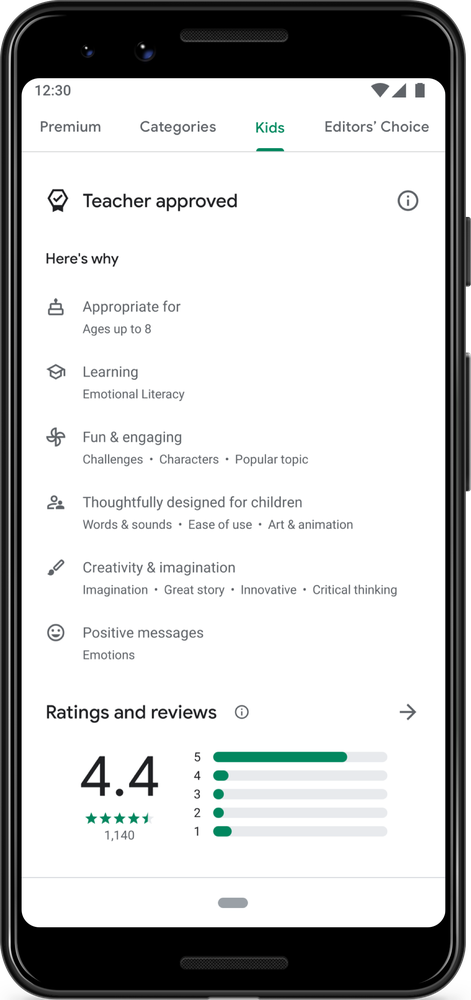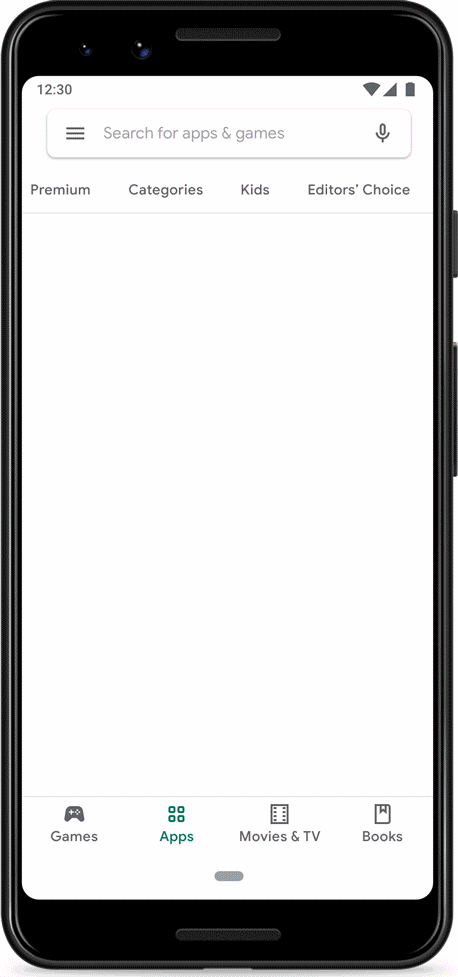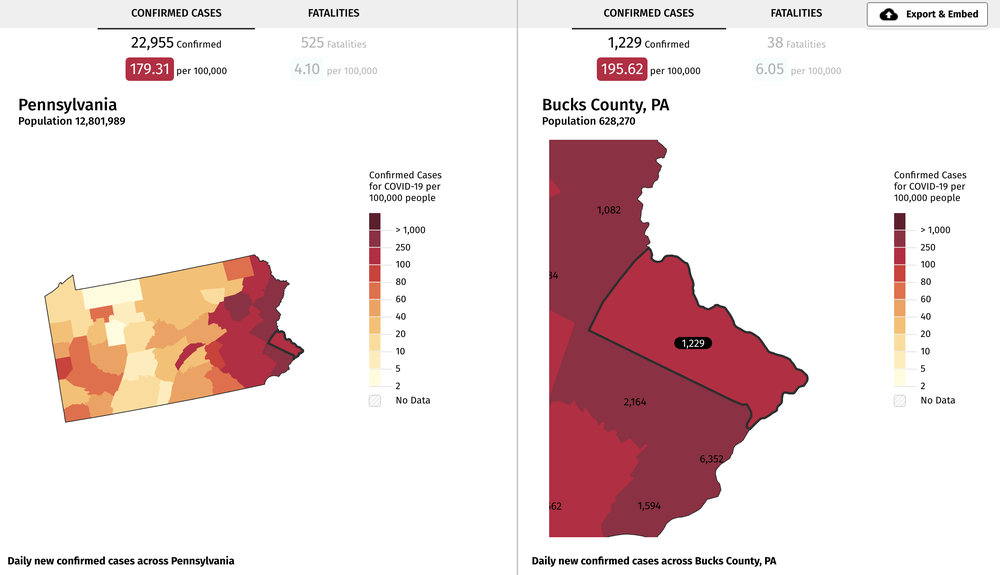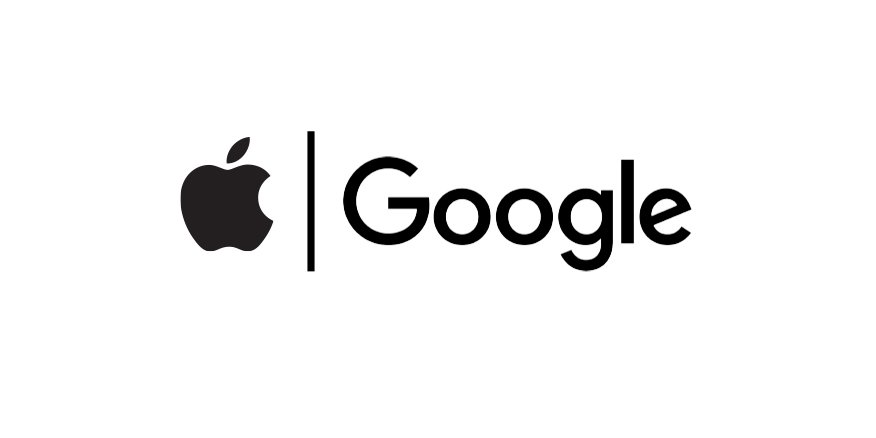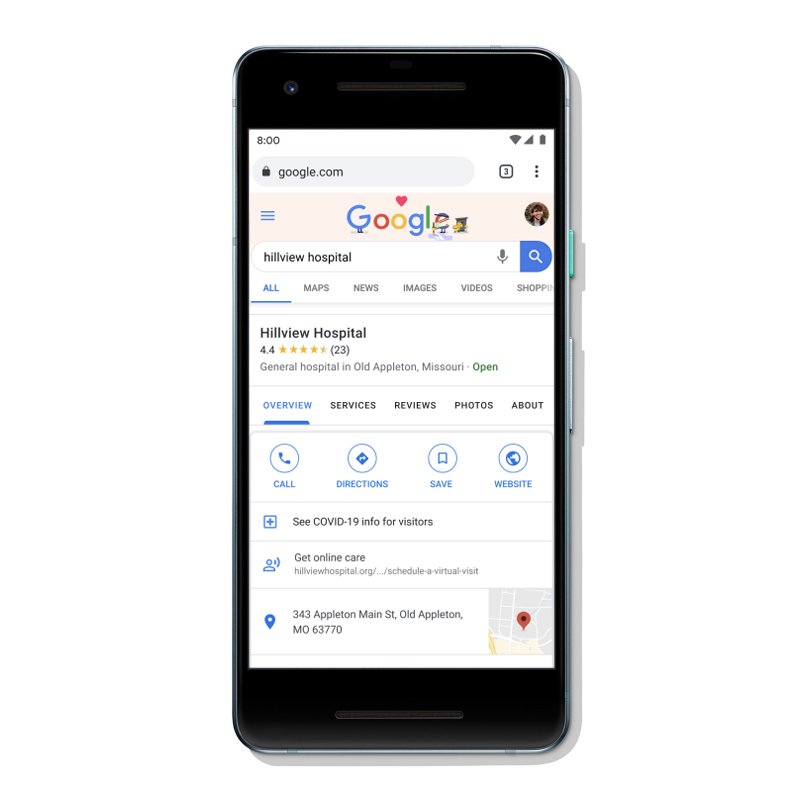With the spread of coronavirus, nonprofits need access to tools to help them work remotely and raise awareness online. To serve the unique needs of the nonprofit community, the Google for Nonprofits team is expanding the program to new countries and offering discounts for nonprofits who use G Suite Business and Enterprise editions.
Reaching nonprofits in more countries
In the program’s first expansion in years, we’re bringing Google for Nonprofits to 6 new countries—Portugal, Greece, Estonia, Latvia, Lithuania, and Peru. Google for Nonprofits is now available in 57 countries, helping thousands ofeligible organizations get access to Google’s nonprofit tools and continue business operations amid COVID-19.
Nonprofits can activate G Suite for Nonprofits at no cost and collaborate online with apps like Gmail, Docs, and Calendar. In addition, advanced features of Google Meetare available to all editions of G Suite through September 30, 2020. To help organizations raise awareness online, the Ad Grants Crisis Response Program is extending Ad Grants, up to $10,000 worth of text-based Search ads at no cost, in these countries through October 2020. The YouTube Nonprofit Program and Google Earth and Maps also offer nonprofits storytelling tools to amplify their cause.
Discounting G Suite Business and Enterprise editions for nonprofits
Many nonprofits are learning how to transition their staff and programs to online-only formats, and with that comes challenges around cloud storage, security and virtual collaboration. To give nonprofits access to G Suite’s advanced features, we’re launching nonprofit discounts globally for G Suite Business ($4 per user per month, normally offered at $12) and G Suite Enterprise ($8 per user per month, normally offered at $25). As always, G Suite for Nonprofits will continue to be offered at no charge.
G Suite Business for Nonprofits offers 1 TB storage per user, access to Google Vault for data management, video conferencing for up to 150 people, along with more security and administrative options. With G Suite Enterprise for Nonprofits, organizations have all the features of G Suite Business and G Suite for Nonprofits, with the addition of email encryption, live streaming and video conferencing for up to 250 people, as well as Cloud Identity to manage users and apps.
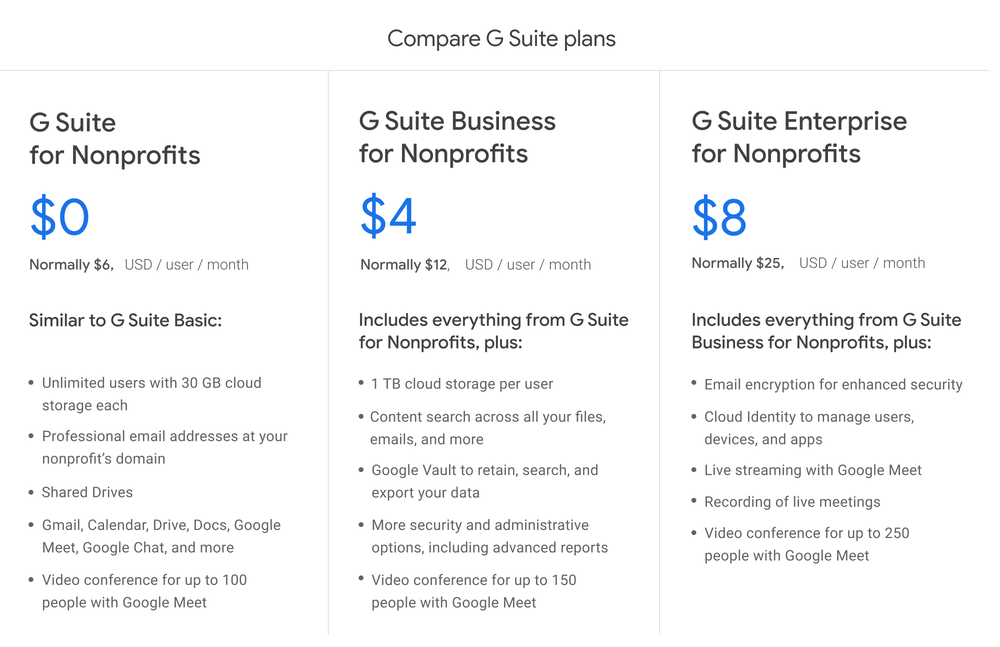
Google for Nonprofits is on a mission to empower nonprofits with technology. See our full list of COVID-19 resources on the Google for Nonprofits website, Coronavirus Resources page. Subscribe to our YouTube channel to get notifications for upcoming live streams and to learn more about our products.

